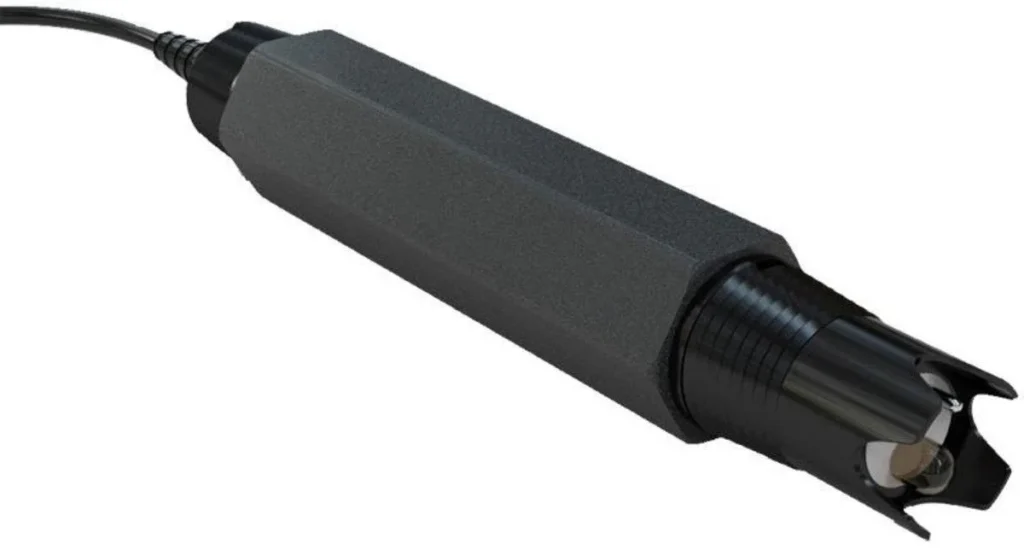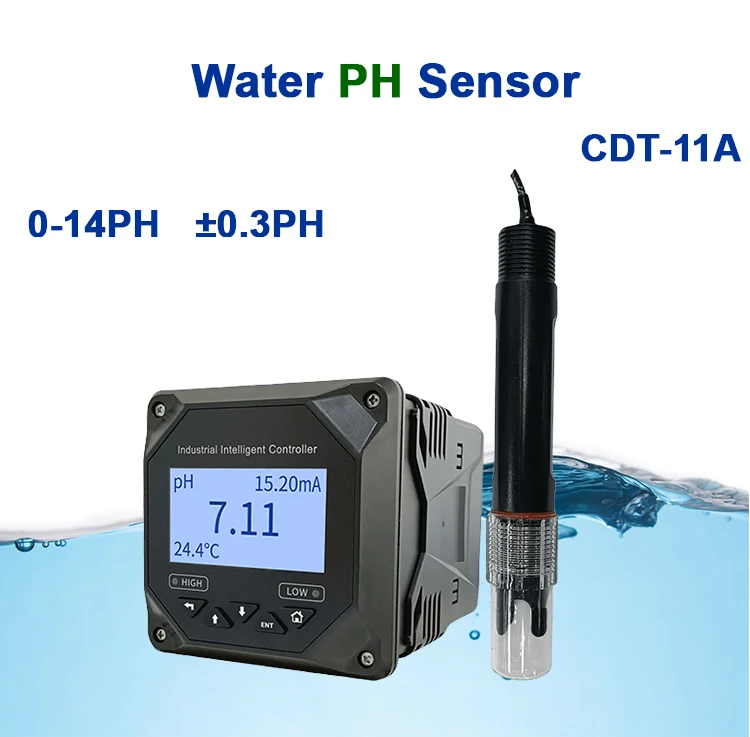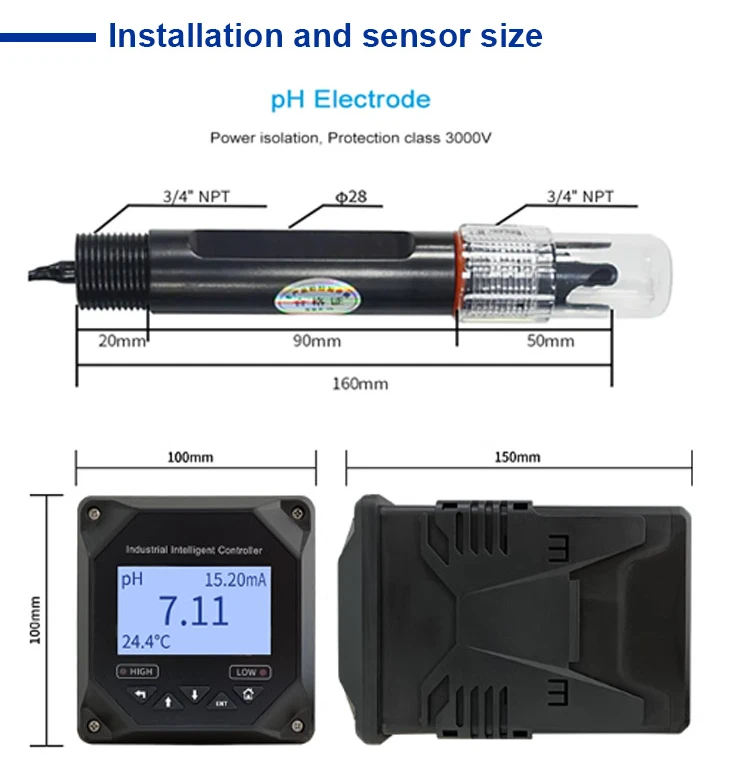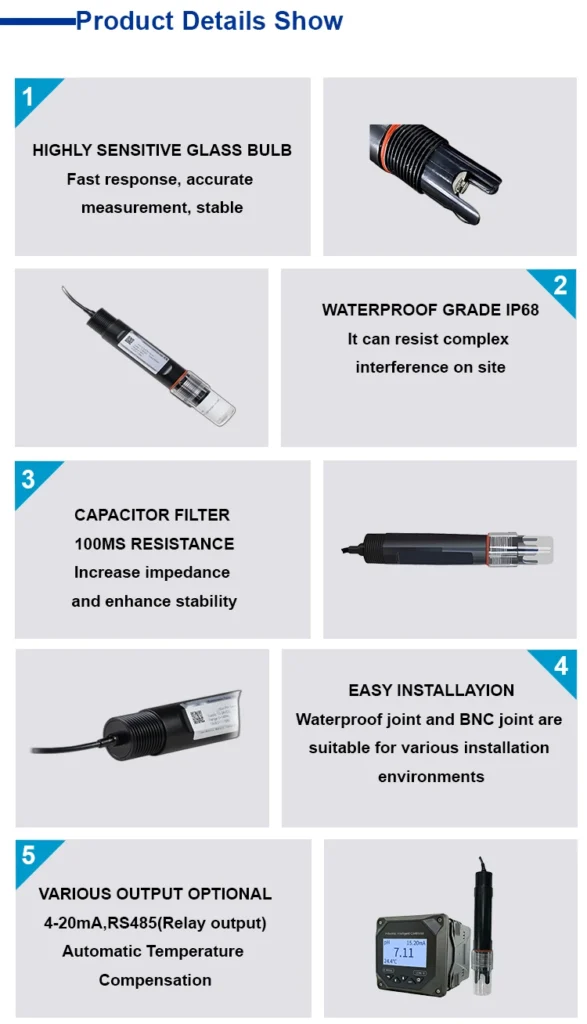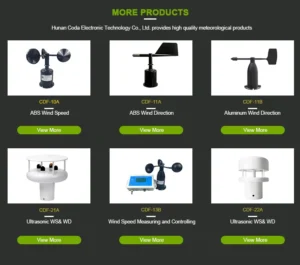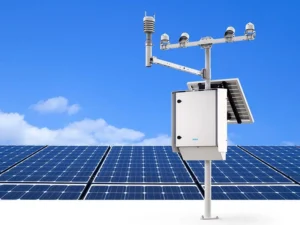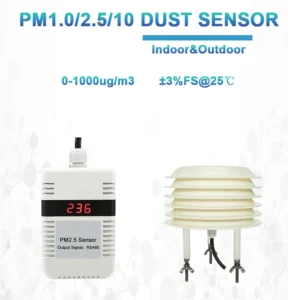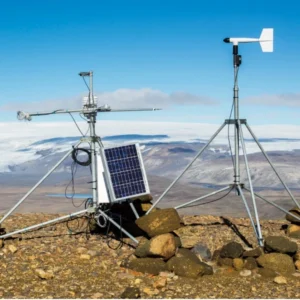Submersible pH Sensors: A Key Component in Modern Wastewater Treatment
In today’s eco-friendly world, wastewater treatment is more than just cleaning water. It also meets strict rules and environmental standards.
A main tool for this is the pH sensor that goes underwater. This special device helps ensure wastewater is treated well and safely. It protects both ecosystems and public health.
The Importance of pH in Wastewater Treatment
Effective wastewater treatment requires a good understanding of pH. pH is a scale that shows how acidic or basic a solution is. It ranges from 0, which is very acidic, to 14, which is very basic. A pH of 7 is neutral.
It is important to keep the right pH levels. They affect how well treatment processes function. This includes how well contaminants dissolve and how effective biological methods are.
Within wastewater treatment, pH control is critical for multiple reasons:
– **Improving Impurity Removal:** pH affects processes like coagulation and flocculation. These processes are important for removing particles.
– **Optimizing Chemical Use:** Keeping the right pH helps treatment chemicals work better and reduces waste.
– **Preventing Microbial Risks:** Keeping the right pH levels prevents harmful germs from growing. It also helps biological treatments, such as activated sludge systems.
– **Achieving Regulatory Compliance:** Treated water must meet environmental rules to reduce harm to the ecosystem.
Advancements in Submersible pH Sensors
Submersible pH sensors have improved a lot. They are now very important in wastewater treatment plants. They are great for tough conditions like muddy water or complex fluid systems. There are several types that are commonly used:
– **Glass Membrane Sensors:** These sensors are known for their accuracy and strength. They use glass membranes to measure hydrogen ion levels. These membranes give very accurate readings.
– **Open-Junction Sensors:** These sensors are cheap and dependable. They do well in situations that need stability and do not have high costs.
– **Miniature Sensors:** These small and portable sensors are great for field testing. They can be installed easily at different treatment sites.
How Submersible pH Sensors Work
Submersible pH sensors work by using several parts to measure and send hydrogen ion levels. The main parts are the glass membrane electrode, the reference electrode, and buffer solutions. These components help the sensor work well, even in different conditions.
Operational Steps:
1. **Measurement with Glass Membrane:** The sensor has a glass membrane. This membrane lets hydrogen ions pass through. This creates a difference in concentration that we can measure.
2. **Signal Conversion:** This gradient is converted into an electrical signal by an internal electrode. This signal is then used for data processing.
3. **Reference Electrode Stability:** The reference electrode gives a standard for measurements. This helps make results consistent and accurate.
4. **Data Transmission:** The electrical signal is sent through cables to monitoring equipment. This allows for analysis and display of real-time results.
Applications and Advantages in Wastewater Treatment
Submersible pH sensors have many uses in wastewater management systems, including:
– **Influent Monitoring:** Checking incoming water to get it ready for the best treatment processes.
– **Biological Process Optimization:** It is important to keep the right pH levels for microbes in biological treatments.
– **Regulatory Compliance:** We check that the released water meets environmental standards. We do this by testing pH levels before it is discharged.
– **Remote Data Gathering:** Gives real-time pH readings from distant locations for fast process changes.
Submersible pH sensors have many uses in wastewater management systems, including:
– **Influent Monitoring:** Checking incoming water to get it ready for the best treatment processes.
– **Biological Process Optimization:** It is important to keep the right pH levels for microbes in biological treatments.
– **Regulatory Compliance:** We check that the released water meets environmental standards. We do this by testing pH levels before it is discharged.
– **Remote Data Gathering:** Gives real-time pH readings from distant locations for fast process changes.
Key Benefits:
– **Operational Efficiency:** These sensors give accurate and quick data. This helps improve treatment processes for the best results.
– **Regulatory Alignment:** Accurate pH monitoring makes it easier to follow environmental rules. It also lowers the risk of penalties for non-compliance.
– **Sustainability:** Their reliability makes wastewater practices better for the environment. This helps protect nature and saves resources.
Submersible pH sensors are key for today’s wastewater treatment. They help the processes run smoothly and responsibly. These sensors help protect our water resources. Their advanced features are important for managing the environment sustainably.
Challenges and Limitations of Submersible pH Sensors
Submersible pH sensors work well, but they have some challenges. Signal interference often happens in muddy water or low oxygen conditions. Sensor drift is another issue that can change reading accuracy over time.
To keep them working well, regular maintenance and calibration are important. Operators need to know the limits of the sensors. This helps them understand the data correctly and make good choices.
Maintenance and Calibration of Submersible pH Sensors
The maintenance and calibration of submersible pH sensors are important for wastewater treatment. Keeping them in good shape ensures they work well. Regular calibration fixes any errors caused by sensor drift.
Each sensor’s needs should be part of the maintenance schedule. Use the right tools and methods for each task.
Calibration means comparing sensor readings to set standards. Then, adjustments are made to improve accuracy. This process is important for keeping sensors reliable over time. It can also help the sensor last longer.
– This means you won’t need to replace it as often.
– As a result, operational costs will be lower.
Future Innovations in Submersible pH Sensors for Wastewater Treatment
The future is bright for submersible pH sensors. Many new advancements are on the way. Real-time monitoring and remote data transmission are becoming common.
This allows operators to get and analyze information from far away. These features are especially helpful for large treatment facilities where collecting data by hand can be hard work.
New technologies, such as advanced analytics and machine learning, are now used together. This helps systems find problems and suggest solutions early. These new ideas aim to improve wastewater treatment. They help make sure that treated water meets strict quality standards.
Conclusion
Submersible pH sensors are important tools in wastewater treatment today. They give key data that helps make processes safe and effective. Their impact on the industry is significant. This leads to better treatment results and improved safety for the environment.
As technology gets better, these sensors will become smarter. This will make them more helpful in managing water systems.
Submersible pH sensors are important tools in both city plants and industrial sites. They help protect resources and the environment. These sensors also support efforts for a sustainable water supply.
